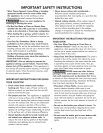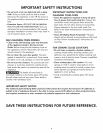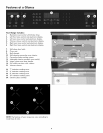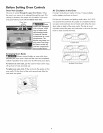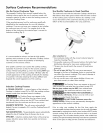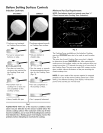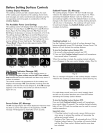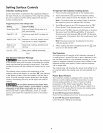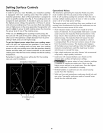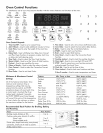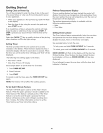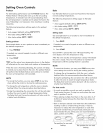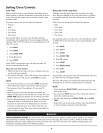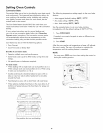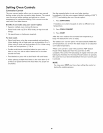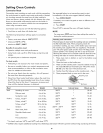
Setting Surface Controls
Power Sharing
In order to give you more flexibility, your induction cooktop
is equipped with more cooking zones than the number of
induction generators. Each of those generators is assigned to
power a specific cooking zone (Fig. 1). Two cooking zones are
assigned to each generator. To be able to give you access to
the highest power ratings, the generator will focus its power
onto only one cooking zone. If you use more than one cooking
zone at high power on the same generator, the generator will
need to share its power to both cooking zones, thus lowering
the power level of one of the cooking zones.
When you are sharing power (cooking in both zones}, the
last zone set will cook at the power setting you selected. The
other zone will experience a slight decrease from its power
setting if both zones are set high enough.
To get the highest power output from your cooking zones,
cook with only one ¢ookware per generator. If you need to
use most of your cooking zones at once, start your cooking
process on only one cooking zone within the generator heating
section and then add your second cookware on the second
cooking zone when the first one has already reached its cooking
temperature.
Remember to select the power setting last for the cooking
zone you want to maintain.
2 Induction Generators
Operational Noises
The electronics generating the induction fields are pretty
much noiseless but they do produce heat at high power
level. A soft-sounding cooling fan activates when the unit is
running multiple cooking zones at once or when a cooking
zone is set at very high power settings.
The buzzing sound you could hear from your cooktop is not
coming from the electronics but from the cool<ware you are
using. Here are some causes of this noise:
° Most induction-ready cookware are made of several
layers of materials. An encapsulated steel layer is usually
used to harness the induction field and transform it into
heat, which is then transferred to the other materials by
radiant energy. The induction field wiil cause the steel
layer to vibrate against the other materials in which it
is encapsulated. This is the most common cause of noise
from the induction process. This buzzing only happens
at the higher power level settings. Note that high quality
cookware manufacturers weld this steel layer in place
which lowers or cancel this noise.
° Light weight cookware may also vibrate. We recommend
using heavy weight quality cookware.
° Cookware with warped bottoms can vibrate on the
ceramic glass surface at high power settings.
° _ The power output of your induction cooktop
is capable of warping an empty pan. Never use the
higher power settings on an empty pan. Even the highest
quality cookware is vulnerable to warping.
° Riveted handles on cookware can also cause buzzing
sounds from the vibrations.
° Solid cast iron and enamelware cookware should not emit
any noise. Top quality cookware made of several layers
should also be relatively quiet.
4 Cooking Zones
Fig. |
12



